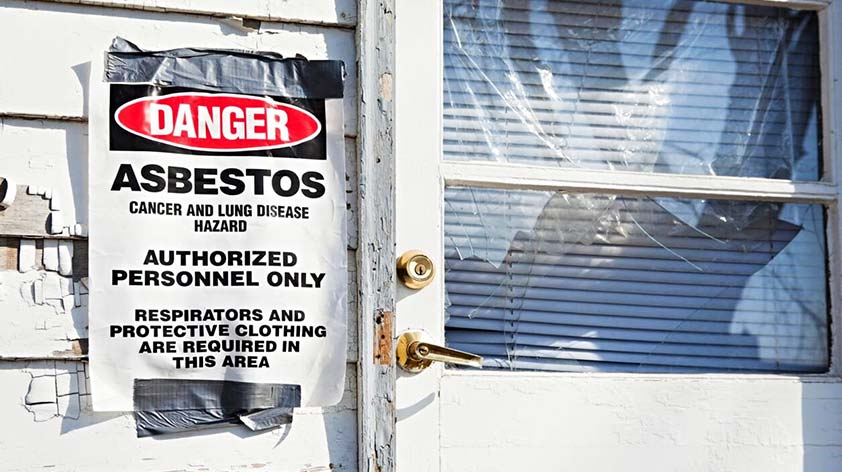
Asbestos-related illnesses are medical conditions of the pleura and the lungs caused by the inhalation and absorption of asbestos particles. A few of these illnesses include non-malignant disorders like diffuse, pleural thickening, pleural effusion, pleural plaques, and asbestosis (pulmonary fibrosis due to asbestos).
However, it can also result in malignancies such as mesothelioma and lung cancer. Individuals who work in jobs with increased asbestos exposure are more prone to developing asbestos-related illnesses than others. Follow on for 4 Treatment Methods for Asbestos-Related Illnesses!
Asbestos exposure can also happen at employees’ homes due to particles accumulating on workers’ clothes, also known as para-occupational exposure. Moreover, these illnesses can also occur due to non-occupational exposure.
Asbestos was extensively used in many building materials in the past. Hence, large amounts of asbestos-containing materials remained in homes and buildings before the government regulated this mineral’s use.
Furthermore, the aging and withering of these buildings can also cause asbestos fibers and particles to be released into the air, creating a health hazard in the process. Therefore, individuals who disturb these asbestos-containing materials during renovation and maintenance will be affected in the long run.
With that said, let’s look at a few asbestos-related diseases and their treatment options below.
1. Occupational Mesothelioma
Malignant mesothelioma is a terminal, rare asbestos-related illness. Asbestos exposure is unsafe in any amount; however, malignant mesothelioma will generally develop through long-term asbestos exposure at the workplace. Most recorded mesothelioma cases are pleural, meaning tumor growth on the lining of the lungs. But, this life-threatening disease can also develop on the linings of the heart and stomach.
That said, to understand more about mesothelioma and treatment options, refer to online resources for patients diagnosed with this illness. Symptoms will start to appear when your cancer grows, spreads, and presses against your abdominal cavity and chest wall.
Some of these symptoms include; weakness in the muscles, chest or abdominal pain, respiratory complications, pleural effusion, shortness of breath, night sweats, dry cough, etc. As far as treatment options are concerned, that typically depends on the stage of your mesothelioma. Meaning, if you’re diagnosed with the 2nd stage, you might benefit from surgery, but if you’re diagnosed with the 4th stage, there are little to no options left.
Some treatment options for mesothelioma include; Tumor Treating Fields, Immunotherapy, Radiation Therapy, Chemotherapy, and Surgery.
2. Occupational Asbestosis
Asbestosis is a chronic (long-term) lung condition caused by prolonged exposure to asbestos. When the asbestos particles are inhaled, they can gradually build up in your lungs and cause damage to them over time.
That said, for asbestosis to occur, long-term exposure to high volumes of asbestos dust and particles is necessary. But that isn’t the only risk factor, as many individuals don’t develop asbestosis, even after heavy asbestos exposure.
Inhaling asbestos dust and particles will eventually lead to scarring of the lungs in some people, leading to a host of symptoms, including; clubbed (swollen) fingertips, chest pain, fatigue, wheezing, persistent cough, shortness of breath, etc.
There is no cure for asbestosis once contracted, as it will be impossible to reverse the lung damage caused by this disease. Asbestosis symptoms are more likely to worsen in individuals who smoke. If required, your doctor will suggest treatment options such as oxygen therapy to improve your quality of life, alleviate pain, and treat breathing issues.
3. Pleural Effusions
Pleural effusion is caused by excess fluid build-up between the pleural layers present outside the lungs. These are thin membranes that line the inside of the chest cavity and the lungs, lubricating them while facilitating breathing.
Typically, a small amount of fluid is already present in these layers. That said, the severity of pleural effusion depends on its primary cause, whether you can treat it effectively or whether breathing is affected.
A few causes of pleural effusion include; prolonged asbestos exposure, heart failure, pneumonia, or an infection due to a virus. Therefore, you must consider two factors; treating the underlying cause of the pleural effusion and treatment for associated mechanical problems.
Treatment will depend on the underlying condition and whether the pleural effusion leads to severe respiratory symptoms, such as breathing difficulties or shortness of breath. For instance, A pleural effusion leading to respiratory issues might be drained using a chest tube or therapeutic thoracentesis.
Furthermore, pleural sclerosis conducted with sclerosing agents has a 50% success rate in preventing the pleural effusions from recurring.
4. Atelectasis
Atelectasis is a disease that affects your lung sacs and stops them from inflating correctly. When your lung’s air sacs become deflated, they won’t inflate properly or take in enough oxygen.
If most of your lung is affected, you might not receive enough oxygen, leading to severe health issues. That said, atelectasis is generally not life-threatening. However, it would be best to treat it quickly to prevent worsening over time. Symptoms include; skin and lips turning blue, chest pain, coughing, increased heart rate, shortness of breath, etc.
Your doctor will monitor you carefully and recommend various treatment options depending on the severity of your atelectasis. Furthermore, they might perform a bronchoscopy to remove blockages so you can breathe freely again. Or treat the condition with medicine or a procedure to relieve pressure on your lung.
It is a no-brainer for workers to protect themselves from workplace hazards and harmful substances at all costs. Hence, it would be best to prioritize your mental and physical health above everything else. After all, if you’re still working in an unsafe, unclean work environment only to earn a pay check, you need to understand that a monthly salary won’t do you any good when you have to pay thousands of dollars (pounds or Euros) in expensive treatments in the future.
What are your thoughts on the subject of asbestos-related illnesses? Let us know in the comments below, and join in the conversation on Facebook, Twitter & Instagram!









